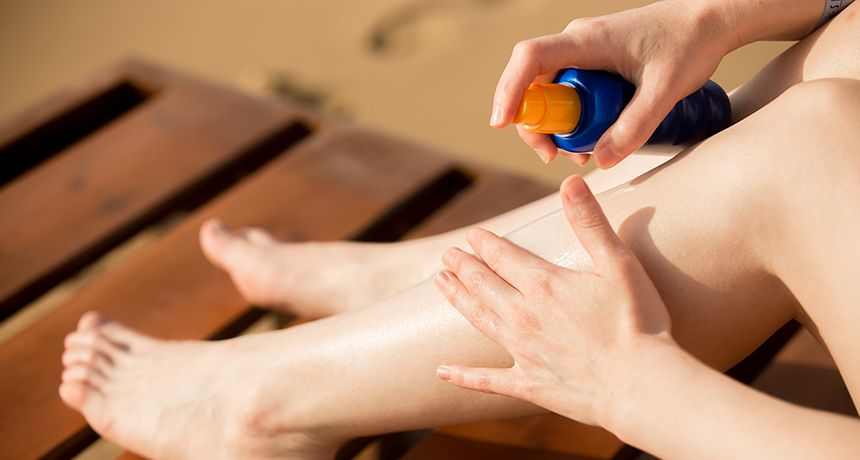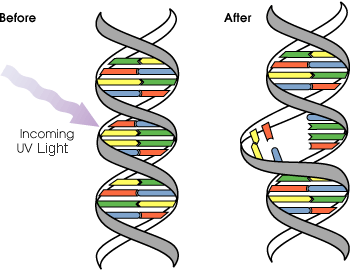Early test results suggest such sunscreens might work better the longer they’re exposed to sunlight

Wearing sunscreen can help you avoid sunburn and protect your skin cells from damage.
But you need to reapply sunscreen after spending some time in the sun. A new finding could lead to another type of sunscreen that avoids that hassle. In fact, the longer you wore it, the better it would protect you from the sun’s harmful rays. The material behind this potential new sunblock: DNA.
DNA is short for deoxyribonucleic acid. It’s the genetic blueprint inside cells that instructs them about what to do — and when. “DNA molecules can get damaged when exposed to sunlight,” notes Guy German. He’s a biomedical engineer at Binghamton University in New York. Instead of letting the sun damage the skin’s DNA, his group asked itself: Why not shield that DNA with some other type?
“Really cool science,” German says, often “starts with a simple conversation.” In this case, that discussion took place over coffee with a biochemist. This was Mark Lyles at the University of Rhode Island in Kingston. German had been thinking about how to use DNA as an ingredient in cosmetics.
Lyles had lots of ideas.One of them was to work with thin layers, or films, of DNA. Other people had already looked into using DNA films in electronics or in biological sensors, for instance. But no one had studied how such films might interact with light. That would be important to know when making products for skin. After all, people go out in the sun.
German’s team ordered some DNA from a company that supplies materials to labs. Those companies can provide DNA from various species. What they got just happened to be DNA from the sperm cells of male salmon, German explains.
His group mixed this DNA with water and some ethanol. That’s a type of alcohol sometimes used as a solvent (as it was here). The researchers then spread the mix onto a surface to dry. As the liquid evaporated, the DNA molecules arranged themselves into a thin film. They did this in much the way that drying paint leaves a film of colored pigment on a wall.
Next, the team shone light on the DNA films.

They tested two broad spectra of the ultraviolet (UV) rays given off by the sun — UVA and UVB. You can’t see either type of this light because their wavelengths are too short for the human eye to detect. Still, UVA and UVB can damage DNA. And when that damage occurs in skin cells, it can lead to cancer.
The film made from the fishy DNA absorbed much of the UVA and UVB light, the team showed. That absorption would keep this light from reaching any skin cells that might have been below.
At first, “the films can block up to 90 percent of UVB wavelengths and up to 20 percent of UVA wavelengths,” German reports. But the longer that UV light shines on the films, the more UV light they can now block. In other words, the DNA shield seems to strengthen with use.
So far, the highest exposures tested are equal to the UV light that would come from about 25 straight days in the summer sun, German explains.
These researchers have some ideas about why their new sunscreen improves with use. One possibility: UV light creates more connections among the film’s DNA molecules. Another possibility: Sunlight…
The post One day, your sunscreen may be made from DNA appeared first on FeedBox.